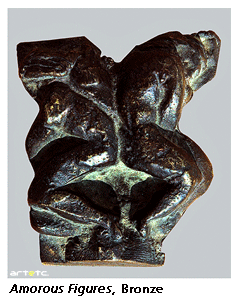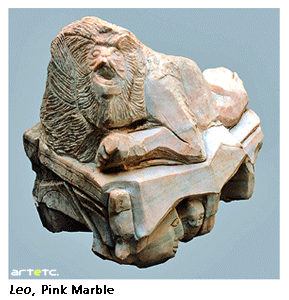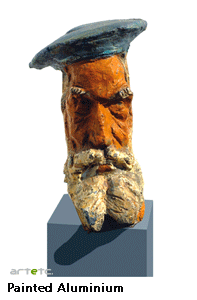- Editorial
- Shibu Natesan Speaks on Protest Art
- Rising Against Rambo: Political Posters Against US Aggression
- Transient Imageries and Protests (?)
- The Inner Voice
- Bhopal – A Third World Narrative of Pain and Protest
- Buddha to Brecht: The Unceasing Idiom of Protest
- In-between Protest and Art
- Humour at a Price: Cartoons of Politics and the Politics of Cartoons
- Fernando Botero's Grievous Depictions of Adversity at the Abu Ghraib
- Up Against the Wall
- Rage Against the Machine: Moments of Resistance in Contemporary Art
- Raoul Hausmann: The Dadaist Who Redefined the Idea of Protests
- When Saying is Protesting -
- Graffiti Art: The Emergence of Daku on Indian Streets
- State Britain: Mark Wallinger
- Bijon Chowdhury: Painting as Social Protest and Initiating an Identity
- A Black Friday and the Spirit of Sharmila: Protest Art of North East India
- Ratan Parimoo: Paintings from the 1950s
- Mahendra Pandya's Show 'Kshudhit Pashan'
- Stunning Detours of Foam and Latex Lynda Benglis at Thomas Dane Gallery, London
- An Inspired Melange
- Soaked in Tranquility
- National Museum of Art, Osaka A Subterranean Design
- Cartier: "Les Must de Cartier"
- Delfina Entrecanales – 25 Years to Build a Legend
- Engaging Caricatures and Satires at the Metropolitan Museum
- The Mesmerizing World of Japanese Storytelling
- The Metropolitan Museum of Art Exhibiting Lyrical Visions: Paintings from North India
- Random Strokes
- Asia Week at New York
- Virtue of the Virtual
- What Happened and What's Forthcoming
- Art Events Kolkata, March – April 2012
- Mumbai Art Sighting
- Art Bengaluru
- Delhi Dias
- Preview, April, 2012 – May, 2012
- In the News, April 2012
- Cover
ART news & views
Mahendra Pandya's Show 'Kshudhit Pashan'
Issue No: 28 Month: 5 Year: 2012
by Vrushali Dhage
Mahendra Pandya's show of sculptures and drawings, titled Kshudhit Pashan (Hungry Stone), provided a fractional glimpse of the extensive artistic trajectory of the pedagogue-artist. The works displayed were not just his recent works but also those which were mindfully culled out from his vast body of works done over the decades, as pointers to his practices. The show was housed at the Exhibition Hall at the Faculty of Fine Arts, M. S. U. Baroda in February 2012.
A look through the show made it clear that the intention of the curator was not to present a specific body of works of the artist, but of presenting an array of works which hint at various aspects of the working process of the artist, as each of them hold an independent identity. By placing drawings and sculptures together, there is always a risk of the drawings getting a subordinate or elementary status. Pandya's drawings cannot be mistaken as simple preparatory sketches for the final sculptures. For example the portrait of Ghalib, ink on paper, or narrative drawings based on mythological episodes or even contemporary concerns, at times as attempts to understand forms, as studies and also as constructed narratives, form a distinct vocabulary and therefore have to be granted an independent status. Moving from the two dimensional drawings to three-dimensional sculptures, a common thread that binds the practices is the basic element of a - line. The line according to Pandya plays a dominant role as a tool of exploration be it surfaces, depths, or defining volume, and even opening various possibilities any given material can provide.




Retaining the raw quality of the stone the artist avoids any possibility of restrictive artificiality by adhering to organic forms. These forms have been explored by Pandya not through a single material or style, but through various conventional and unconventional mediums; be it the assemblages in wood, sheet metal, painted cement, stone, bronze or acrylic sheets (to just name a few), further modified by a variation in scale - small or monumental. An attempt to compare his works in stone like Leo or Shesha Shayin done in pink marble in 1990, with the small portraits done in painted aluminium and bronze of Prof. Bendre, Sankho Choudhary, G. R. Santosh, or Amorous Figures in bronze, 1981/82 or his early works, Reclining Figure in rose wood done in 1954, stand as proofs of not just Pandya's explorative tendencies but also of his mastery of the mediums. At this juncture it is imperative to mention that the constant shift in the medium was a voluntary choice born out of mastering one and a desire to venture into a different direction and not of instability or failure to deal with any one of them. This constant shift of materials, without letting a single style dominate or overpower, can be considered as an act of not carving a cosy niche of an accepted and acclaimed style but an act of avoidance, rather obliteration of any possibility of stagnancy.
According to Pandya, his science background (of his early years of education) helped him to develop an inquisitive, an eager/ urgency to explore attitude; which gets reflected in his approach towards different mediums and techniques. Not being satisfied with a single style, Pandya's works then come through, not as a simple outcome but as a dialogue with different mediums/ materials. Even with respect to the use of different tools both conventional chisels and hammers, to pneumatic ones, Pandya views all as providers of options in their own respect. Further Pandya says, “It is my obsession to carve on my own, as there is a dialogue between me and my work, moreover a sheer joy of sculpting.” While stressing that no visual language can be separated from techniques employed, as newer possibilities emerge either intentionally or accidentally. The show made an attempt to portray Pandya's works not just as works of art to be displayed as exhibits, but of presenting a glimpse of the artist's attitude, working methods and multiplicity of practices in a precise manner without running into a risk of presenting as a show simply displaying works along a timeline.
Pandya's liberal, eclectic attitude coupled with his desire and a near restlessness to head into un-ventured territories has never let him even come close to any sort of stativity both, mentally and practically. The octogenarian artist has played a vital role as a pedagogue at the Department of Sculpture, M. S. U., Baroda. His contribution to the department comes not only by being an inspiring faculty, but also from being a relentless practitioner.